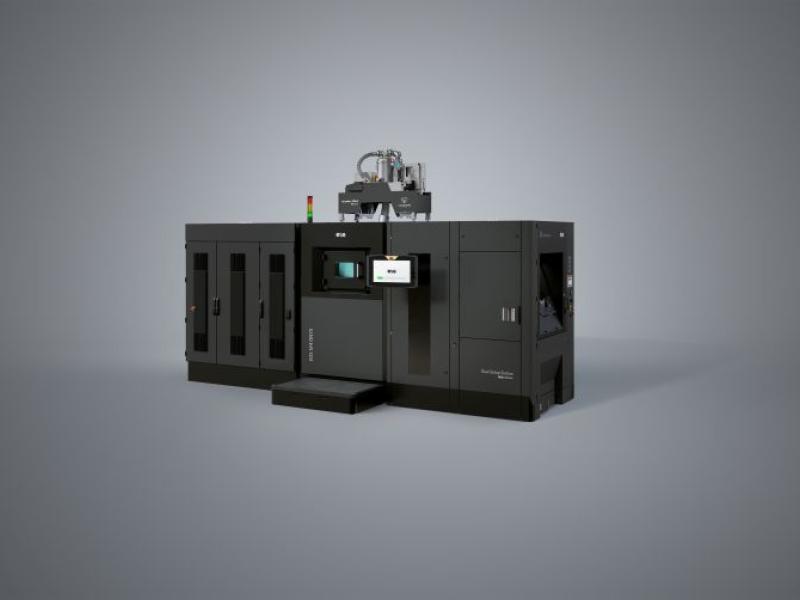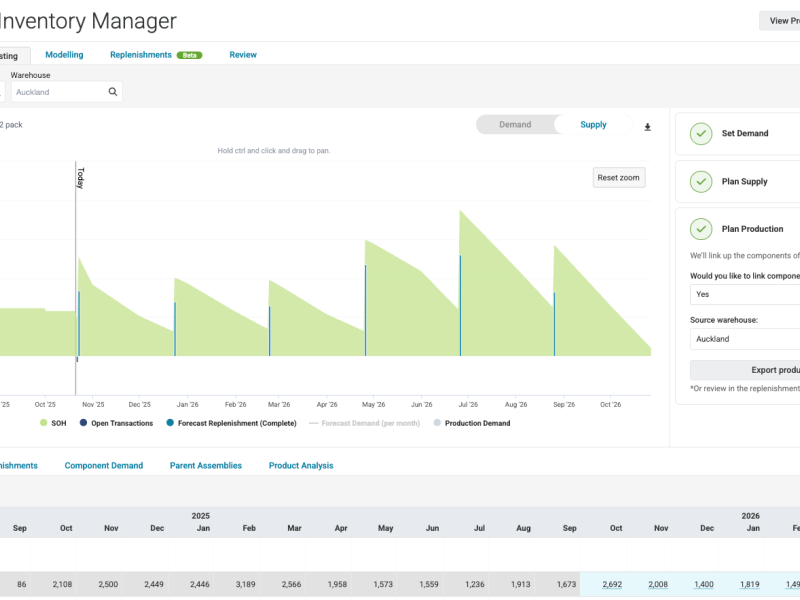Kiwi manufacturers eased off their record-breaking Q1 performance in the second quarter of 2025 while preparing for steadier growth, according to new data from inventory management software provider Unleashed.
The average small-to-medium firm generated $268k of revenue in Q2, down 13.3% from Q1, but still $110,000 higher than the same period in 2024. While total sales stayed buoyant to round out the first half of the year, gross profit margins (excluding wage costs) dropped to 36.1% (down 1.7% on the previous quarter), their lowest levels since before 2020.
The figures appear in the latest manufacturing report from inventory management specialist Unleashed. Unleashed is an inventory management software platform popular with small and mid-sized manufacturers; its quarterly report is based on data from more than 1,400 firms using the software, across manufacturing categories such as food and beverage, clothing and fashion, and construction.
With the opening quarter of the year delivering the strongest average revenue numbers since Unleashed records began in 2018, the declines are relative and there are signs of strength beneath the headline dips in revenue.
“After such a standout start to the year, some pullback was expected,” explains Jarrod Adam, Unleashed Software’s Head of Product.
“What matters is that businesses aren’t retreating - they’re actively rebuilding stock to secure against future demand. That tells us confidence hasn’t evaporated; firms are adapting.”
Lead days, which had been consistently trending downwards since the supply chain complications of the COVID period, registered their single largest quarter on quarter increase since 2020. The jump from 12 days to 23 days to receive goods after sending an order reflects a more tumultuous global trade environment that has impacted supply chains. However, the 23 days is still within a normal range by historical standards.
At a sector-by-sector level, the heaviest revenue falls were in the Clothing, Footwear & Accessories category, which fell more than 40% QoQ, and in Sports & Recreation, down over 30% QoQ. However, both sectors remain ahead of last year, up 50% and 15% YoY respectively.
Food and beverage sectors take stock
The food and beverage sectors continue to face strong headwinds from high input costs, but Unleashed’s data also shows notes of optimism.
In line with continuing profitability challenges in recent quarters, the beverage sector retreated slightly in Q2. Average beverage sales fell $84k, and gross margins dropped 3pp.
For food manufacturers, sales declined $62k QoQ to $220,482, with profit margins falling 6pp as electricity, freight, and packaging costs weighed heavily. However, the overall sector still shows significant YoY improvement, with revenue up more than 100% compared to the same period last year.
“These are sectors where volatility in inputs can erode profitability quickly,” Adam says. “While sales softened, we're seeing firms being disciplined about working-capital management rather than letting costs spiral.”
However cash flow was likely impacted by an uptick in excess stock as both food and beverage manufacturers replenished inventories in response to lengthening lead times. Beverage manufacturers more than tripled their excess stock QoQ to an average of just under $20,000, while food manufacturers more than doubled theirs to $25,000.
This contrasts starkly with the same quarter last year, when the average food manufacturer held only $5,000 in excess stock and beverage makers just $1,000.
“It’s been a tough few years and input costs have been spiking, especially around freight and labour, which has taken the shine off margins in some channels, "says Leighton Cosgrave, GM of Radix Nutrition, a health convenience brand that also provides specialist freeze-dried contract manufacturing.
“We’ve been proactive in establishing supplier relationships and shared material lines to ease raw material holdings, even offloading stock across partners where needed. Stability is finally emerging, and as we pace into the second half of the year, the usual summer confidence is allowing decisions to be made and positivity to enter the market.”
Construction holds steady as it firms up foundations
Manufacturers supplying the construction sector saw more modest shifts, with sales dipping $34.6k and margins easing 0.7%.
While it is a contraction, Unleashed’s data shows the sector maintains a healthy YoY rebound, up 134% on the same quarter in 2024.
Excess stock levels held steady with only a small increase to $78,000 on average (+8% QoQ). This was accompanied by a surge in purchase orders, with the average firm nearly tripling orders QoQ, to 149 from 53.
A maintained buffer of unsold inventory combined with a surge in purchase orders points to confidence in H2 sales.
“The building and construction sector has long been a bellwether for the overall economy, so these signs of confidence are a welcome indicator that the sector is responding well to lower interest rates and climbing consumer confidence,” says Adam.
Supporting this consolidation, the Industrial Machinery, Raw Materials and Equipment sector recorded strong growth, with revenue up almost 20% QoQ to an average of just under $300,000. Gross margins dipped a modest 1.8%.
Global headwinds remain, but clear skies on horizon
The clearest signal from Unleashed Software’s data in Q2 was a strong swing back to replenishment. Cautious confidence is being tempered by lengthening global supply chains, prompting more deliberate ordering strategies by manufacturers.
- Average purchase orders more than doubled to 151 (+136% QoQ).
- Excess stock lifted to $41k (+86% from Q1).
- Lead times lengthened to 23 days (from 12 in Q1), the largest QoQ change since COVID.
“Manufacturers are balancing caution with preparedness,” Adam notes. “This isn’t 2021-style overstocking - it’s measured, data-driven buffer-building in response to longer lead times.”
With the Reserve Bank cutting the OCR to 3.00% in August and Q2 inflation at 2.7%, financing conditions are easing for Kiwi manufacturers.
Supplementing Unleashed’s data, the Manufacturing Purchasing Managers' Index (PMI) helps paint a broader picture. The PMI is S&P’s monthly indicator that surveys purchasing managers in the manufacturing sector to gauge business activity: readings above 50 indicate expansion, below 50 contraction, and 50 neutrality.
After dipping into contractionary territory in June (48.8), the PMI rebounded to 52.8 in July, pointing to a stabilising demand base heading into the second half of the year.
“Manufacturers are managing through cost pressures, but with easier credit and demand stabilising, we expect the rebound to remain intact,” Adam says. “The challenge will be maintaining margins while navigating material and energy price volatility.”
g






